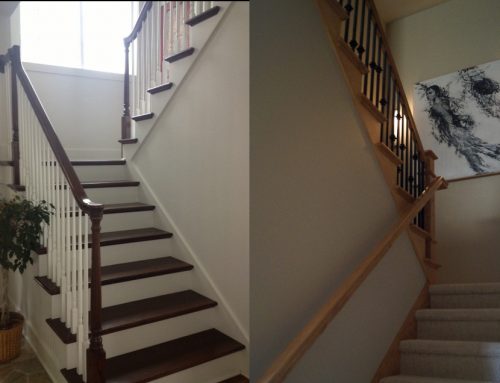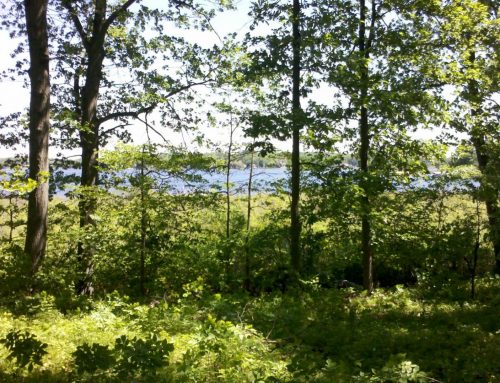It appears as though we are in for another rough winter and, as is the case with any extreme weather, this will raise our awareness of the importance of climate control in our homes. If you’re considering building a new home or contemplating replacing your existing system as part of a remodeling project, it will be helpful to do a little research to educate yourself on the types of systems that are available.
Prior to beginning your decision making process you will need to establish what energy sources are available at your building site or existing home. Although electricity is available practically everywhere, natural gas availability is much more sporadic.
Another site specific factor that needs to be established prior to exploring heating/cooling system options is whether the site is compatible for the installation of a geothermal system – more on this later.
If natural gas is available, the heating/cooling system that is most requested to be installed in our new home and remodeling projects is a gas furnace with standard air-conditioning. Not only is the initial installation cost the lowest of the available systems but it is the one that a majority of our customers feel most familiar with.
If a natural gas system is your choice, we recommend a two-stage furnace with a 95% efficiency rating. This is a very efficient and effective system and has an established history of reliability.
If natural gas is not available, LP or “bottled gas“ will allow for installation of practically the same system used with natural gas. Historically, LP gas prices have been much more volatile than natural gas pricing and this should factor into your decision.
Geothermal systems are a good alternative to LP gas systems when natural gas is unavailable and your building site will allow for installation of this type of system. There are two basic types of geothermal systems and building site characteristics will have a significant impact on which system can be successfully installed on your property.
Open-loop geothermal systems are the least costly and require less land than closed-loop systems, which makes it the more popular choice for our customers. Simply put, an open-loop system takes water from a well and extracts the heat or cooling from that water and then discharges it into a tile, creek or lake.
The proponents of open-loop geothermal systems claim a quick recovery of the extra expense over a conventional natural gas system through much lower operating costs. They further claim that the substantial amount of well water used by this type of system eventually replenishes the aquifer it was drawn from.
If you’re contemplating an open-loop geothermal keep in mind that this system runs untreated well water through equipment and this may lead to a higher probability of expensive service. You will also need access to a proper discharge point on your property.
The other option for geothermal heating/cooling is the closed-loop system. Instead of drawing well water and discharging like the open-loop, the closed loop continually recycles a glycol type liquid through piping installed in trenches on the site or on a pond bottom.
A closed-loop system is more expensive than the open-loop to install and thus the return on your initial investment is not as quick. The closed-loop system also requires more land or a pond that is not needed for the open-loop.
Although more expensive, the closed loop option should prove to be more reliable and some would claim more eco-friendly than the open-loop system. A lack of space on your property for the conventional horizontal closed-loop can be overcome by installing vertical loops but this system is very expensive and seldom used.
The closed-loop and open-loop geothermal systems are referred to as liquid to air systems because they extract the heating/cooling from liquid. An alternative to those systems is a heat pump which is an air to air system. The heat pump extracts heating/cooling from the air surrounding the unit on the exterior of the building.
When heat pumps were initially offered, they had a relatively high set point. A set point is an outdoor temperature at which the equipment will no longer meet the demands of keeping a building warm. At this set point and lower, the unit relies on electrical strip heating which is very uneconomical. Today’s heat pumps have a much lower set point than the earlier models which means the highly efficient newer heat pumps can provide heat for longer periods of time than what was possible with their predecessors.
Air to air heat pumps are seldom used as the primary system in this area but they are an excellent choice as an auxiliary unit to the gas system. When used as an add-on, the heat pump gives you excellent air-conditioning and very efficient heating down to its set point at which time the gas furnace automatically takes over.
Another system that is very worthy of your consideration is in-floor radiant heating with air-handlers for cooling. Warm floors are the obvious benefit to this type of system but providers claim that this product is inherently efficient because the user is not compensating for uneven coverage that is typical with the other systems.
The heating source for the water to be circulated with the radiant heat can be a gas powered boiler or geothermal equipment. The air handlers which provide the cooling come with electrical strip heat as well which provides a nice back up in case the boiler needs service.
Since the radiant heating is not a forced-air system, there is less air movement which significantly reduces air particulates and reduces the amount of time in between dusting.
Because essentially two separate systems are installed in your new home when one selects to use the radiant heating option, it is relatively quite expensive. Radiant heating also requires a bit of a learning curve because of a longer period of time between adjusting the thermostat and feeling the effects of that adjustment.
As is the case with most decisions to be made regarding the specifications for your new home, there are several options available for a heating and cooling system. In our opinion however, this may be one of the more crucial decisions because it makes little sense to build a beautiful home with all the trappings but without the equipment necessary to provide comfort due to an uninformed and incorrect decision on the type of system you selected.
Space does not allow me to offer more details of the system options available or add-on features such as humidifiers, media filters and whole-house ventilation systems but we would certainly appreciate the opportunity to discuss this very important element of your new home or addition with you soon.


